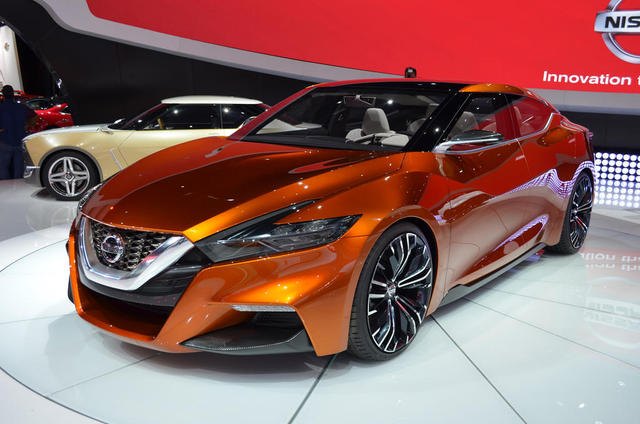Nissan Outsold By Honda In Home, U.S. Markets
Though Nissan remains Japan’s second-biggest automaker with a wide gap ahead of Honda, the latter continues to outsell the former in the United States and at home, much to Nissan’s dismay
According Automotive News, Nissan’s global sales for 2013 increased 3 percent to 5.1 million units, while Honda’s rapid 12 percent growth in sales only managed 4.3 million units in the same period. Further, Nissan sold 86 percent of its 5.1 million vehicles — 4.4 million, to be exact — outside Japan, Honda doing as well by selling 3.5 million of its 4.3 million overseas. Overall, Nissan beat Honda in Europe, Mexico, China and most of Asia, yet lost to Honda in Japan and the U.S.
At home, the reason is due to Honda’s popular line of kei cars (all made in house), and all having undergone a total revamping as of late. Meanwhile, Nissan has partnered with Mitsubishi to make kei cars after years of farming out the practice to the former’s rivals. Though things appear to be looking up for Nissan, they will be looking up at Honda for a good while: Honda sold just over 400,000 kei cars in 2013 to Nissan’s 186,000, while also growing 27 percent in kei car sales against the latter’s 21 percent.
Across the Pacific, Nissan is gaining on Honda’s other home turf, selling 1.2 million units for a 9 percent increase in sales against their rival’s 7 percent increase and 1.5 million units in 2013. Market share in the U.S. held at 9.8 percent for Honda while Nissan took a tenth of a percentage for an even 8 percent in the same period.
Though Honda has done well for itself since becoming the first Japanese auto manufacturer to build a factory in the United States back in 1982 for the Honda Accord — such as exporting more cars around the world from the U.S. than from Japan in 2013 for the first time ever — Nissan aims to turn up the heat through the tandem of new production coming from Mexico, and aggressive tactics devised by Nissan North America’s new chairman Jose Munoz, who is under standing orders to boost his employer’s share of the U.S. market to 10 percent.
Either way, both Honda and Nissan still have a ways to go to take on Toyota; the No. 1 Japanese and global automaker moved 9.98 million units worldwide in 2013.
More by TTAC Staff
Latest Car Reviews
Read moreLatest Product Reviews
Read moreRecent Comments
- Turbo Is Black Magic My wife had one of these back in 06, did a ton of work to it… supercharger, full exhaust, full suspension.. it was a blast to drive even though it was still hilariously slow. Great for drive in nights, open the hatch fold the seats flat and just relax.Also this thing is a great example of how far we have come in crash safety even since just 2005… go look at these old crash tests now and I cringe at what a modern electric tank would do to this thing.
- MaintenanceCosts Whenever the topic of the xB comes up…Me: "The style is fun. The combination of the box shape and the aggressive detailing is very JDM."Wife: "Those are ghetto."Me: "They're smaller than a Corolla outside and have the space of a RAV4 inside."Wife: "Those are ghetto."Me: "They're kind of fun to drive with a stick."Wife: "Those are ghetto."It's one of a few cars (including its fellow box, the Ford Flex) on which we will just never see eye to eye.
- Oberkanone The alternative is a more expensive SUV. Yes, it will be missed.
- Ajla I did like this one.
- Zerofoo No, I won't miss this Chevrolet Malibu. It's a completely forgettable car. Who in their right mind would choose this over a V8 powered charger at the rental counter? Even the V6 charger is a far better drive.


































Comments
Join the conversation
Well, at least Nissan has the world's best-selling electric car, but that's little comfort.
Few years ago they were about the same size, even Honda was Japan´s No.2. The difference between them i would say globally is that Nissan was sooner in CHina + is bigger there and Nissan has trucks-pickups or commercial vans - actually that´s why i believe is Nissan more popular in poorer less developed countires in Africa or Asia- because on those roads you need SUV´s pickups - that´s where Nissan is stronger, but with those markets growing and Hona expertise in small cars - with good fuel consumption Honda will be catching up fast, like ASEAN - where Honda is now really growing fast. About US and Japan and Honda being bigger - well in US Honda was always bigger, their were sooner there, Honda is very popular, if Toyota wouldn´t be global No.1 and have such big line-up of vehicles in all categories i would say Honda would be No.1 Asian brand in US About Japan- well one year is Honda bigger, next year Nissan - it is ot such important, currently kei cars are at their peak - about 40% of Japan´s market and Honda last year started with new minicars like Honda N-box and so on so they get the momentum, in regular cars Nissan is bigger